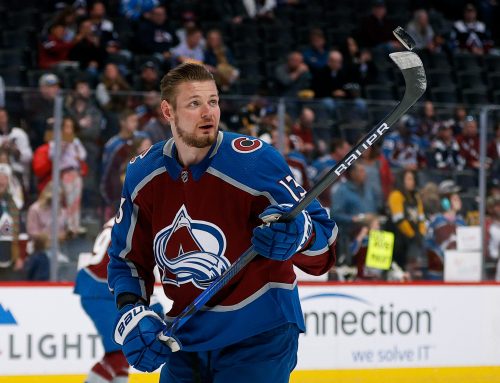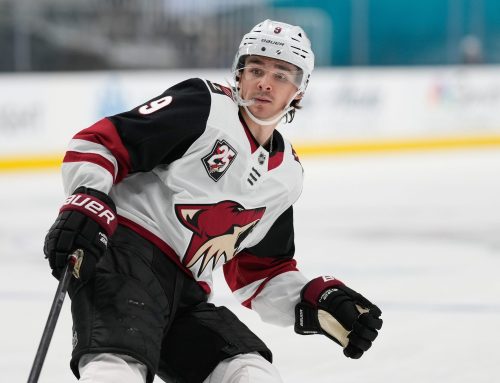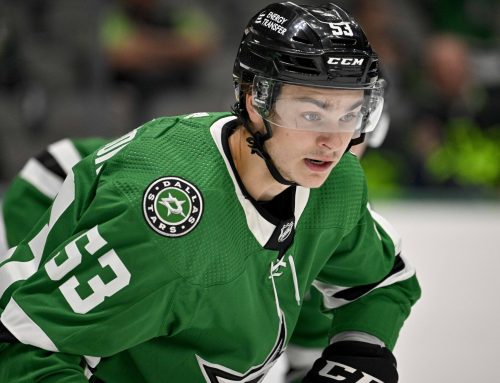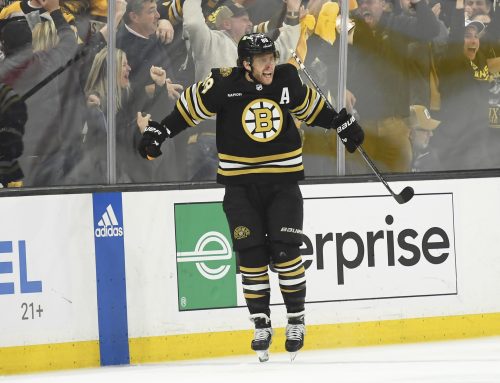Ramblings: Carolina Cleans Out; Hamilton Injury; Esa Lindell’s Contract – May 21
Michael Clifford
2019-05-21

It was locker cleanout day in Carolina. There wasn’t really a lot of significant news to come out of it, there are still some interesting stories to watch nonetheless.
Micheal Ferland said he wants to return to the Hurricanes. He’s coming off another 40-point season, which should be enough to earn him a lengthy-ish deal. The team certainly has the cap space to get the deal done but it’s a question as to whether they want to sign Ferland to a $4-million or so AAV.
Team captain Justin Williams said he’s still undecided about his future. Given that he still had a pretty good year even at the age of 37, and how special this season was in Carolina, my gut feeling is that he comes back for at least one more season. This is a team that is clearly on the cusp of being a perennial contender and Williams doesn’t strike me as the type to just pull the plug on his career at this point. Maybe I’m wrong, hope I’m not.
Being a perennial contender would involve having a somewhat secure goaltending situation, which the Hurricanes definitely do not have. Curtis McElhinney doesn’t know what Carolina management is going to do and quite frankly, I don’t think Carolina management knows what they’re going to do, either. There are a handful of prospects in the system and they still have Scott Darling, but there are effectively 1A and 1B starting roles to be filled on the team. Do both McElhinney and Petr Mrazek return? Just one? Neither? I’d say any of those outcomes is as likely as the others.
We also found out that Dougie Hamilton was playing with a broken finger from earlier in the season. He didn’t miss a game so obviously there wasn’t much of a chance for it to heal properly. Now, they would say that it’s not something that affected him late in the season but I’m always wary of such proclamations.
This is a fun team that is only going to get better with each passing year. More Storm Surges ahead, friends.
*
There was a good interview at The Athletic recently by fantasy baseball analyst Ron Shandler. His subject was James Holzhauer, the guy who is breaking records on the game show Jeopardy! almost daily. Holzhauer started by betting on baseball and playing fantasy sports, so it’s a good interview on how he used stats to beat the market. It’s a good read on not just thinking outside the box, but on doing what is necessary to succeed in a saturated market.
*
Last week, the Dallas Stars signed defenceman Esa Lindell to a six-year contract extension with an average annual value of $5.8-million. The 24-year old blue liner (25 later this week, by the way) had 11 goals and 32 assists in 2018-19 while playing over 24 minutes a night.
When I saw this drop, my initial reaction was, more or less, shock. The last I had looked at Lindell’s fancy stats was probably around the All-Star Game when I updated my daily fantasy spreadsheets. At that time, they didn’t look good. When I looked at them last week with the benefit of hindsight of the entire 2018-19 season, they looked worse. Let’s look at them step by step.
First, from HockeyViz, we have an estimation of his contributions at both ends of the ice at five-on-five. Basically, in a context-neutral setting, and independent of line mates, how has a player fared? This is Lindell over the last two years:

Blue in the offensive zone is bad; that means you don’t drive the play. Red in the defensive zone is similarly bad; that means you’re below-average defensively. Lindell, over the last two years, has been pretty bad offensively and roughly average defensively in this setting.
Let’s take a look at what Evolving Hockey has to say about Lindell’s 2018-19 season:

This is a chart to show what a player contributes offensively and defensively, with their adjustments to compare to a league-wide setting. (I don’t want to mis-represent what their work is so I encourage readers to check out the explainer on their site). Lindell was bad. He was very bad. When you take a three-year outlook for his performance, he looks better, but still bad.
Finally, from CJ Turtoro’s viz, we can look at a deeper level, to see if there’s more going on than just what he’s contributed offensively and defensively. Was he doing the things that tend to lead to good results, like controlled zone exits/entries, shot assists, and stopping the opposition at the blue line? Let’s look at both 2018-19 alone and his three-year sample:

Now, as we can see, his sample from this year isn’t big enough to draw conclusions, but his three-year sample certainly is, and it’s not good. It jives with what was outlined above: atrocious offensively but showed better defensively.
Note: before anyone says “he’s Klingberg’s partner, that’s why he doesn’t have many zone entries/exits,” that’s’ what the percentage bar is for. It’s for showing what percentage of *his* zone entries/exits are with control. The answer is: not many.
Bringing up Klingberg is important here. Depending on where the cap lands, Lindell’s contract will be somewhere around seven percent of the cap. When we look at Cap Friendly and take a look at contracts for defencemen that signed their current contract at least at the age of 22, signed for at least six years, and have a cap hit percentage anywhere close to Lindell’s, we get basically four names: Michael Matheson, Brady Skjei, Shea Theodore, and Jaccob Slavin. We can basically throw out Matheson’s considering his cap hit is about two million lower per season, so it’s Skjei, Theodore, and Slavin. I assume most Rangers fans (and probably the Rangers themselves) would like a mulligan on Skjei even if I think he’s unfairly maligned. I think the best two comparable contracts signed in the last two years, then, are Theodore and Slavin.
I would much, much rather have either Theodore or Slavin at similar cap hit percentages. Either of those guys are capable of carrying their own defensive pair, and Theodore was tasked to do so quite often with Deryk Engelland.
So let’s look into that a bit further. Can Lindell carry his own defence pair? Well, here’s how he did with Klingberg by adjusted shot share at five-on-five this year, and also when Lindell was without Klingberg and vice versa:

That’s bad! That’s very bad! That’s “Shea Theodore With/Without Deryk Engelland” bad!
I can almost hear people saying, “Mike, that’s only one year. The sample isn’t big enough.” To which I say, here are the three-year marks for Lindell and Klingberg, both with and without each other:

Still very bad!
At this point, I’m sure people will chime in with the He’s Still Young argument. I would urge readers to read what I wrote about Theodore back in February. And he’s younger than Lindell. And the Stars blue liner turns 25 this week with three years under his belt.
For anyone out there thinking Lindell is a great young defenceman, there is a chance you’re right. But I hope everything I’ve presented has at least given some cause for reflection. There isn't much in his history that indicates to us he’s worth close to the money he just signed for. I’m very well aware that RFA contracts aren’t negotiated like UFA contracts, but if the choice is between giving a horrific contract or recouping a lot of assets for that very same player because he apparently has significant value, the decision is easy.
Now, that doesn’t mean he’s a dud for fantasy purposes. As long as he continues to play 24 minutes a night attached to Klingberg while getting some secondary PP minutes, he’s a threat for 30 points with a lot of good peripherals. He’ll probably be worth it in cap leagues, at least in the near-term.
The problem with contracts like this is that the coach eventually gets wise to how bad a player is. Rasmus Ristolainen saw his ice time decline significantly this year despite a rotating cast of below-average defencemen with Rasmus Dahlin thrown in; Brady Skjei was a healthy scratch at times this year and his outlook is very much uncertain; Nikita Zaitsev lost about a minute per game at 5v5 this year compared to last and that was before Jake Muzzin showed up. That Lindell will probably play 24 minutes a game this year is far from a guarantee he’ll play 24 minutes a game in 2021.
Cap league owners have a decision to make. It all depends on the league, but I’m sure there are people out there who will see 11 goals, 32 points, and triple-digit hits/blocks from a 24-year old playing with Klingberg and assume he could be a monster. If I were a Lindell owner in a cap league (I’m not), I would be looking to get out from under that contract if at all possible. If I owned him in a cap league that doesn’t count peripherals, and can’t trade him, I’d be fine just cutting him off the roster if the cap space is needed. At the very least, Miro Heiskanen will play himself ahead of Lindell shortly, pushing Lindell to third in the pecking order.
This is a bad contract and one that cap league owners will not want on their roster moving forward.





 FLA
FLA BOS
BOS VAN
VAN EDM
EDM DAL
DAL CAR
CAR COL
COL T.B
T.B PHI
PHI WSH
WSH
